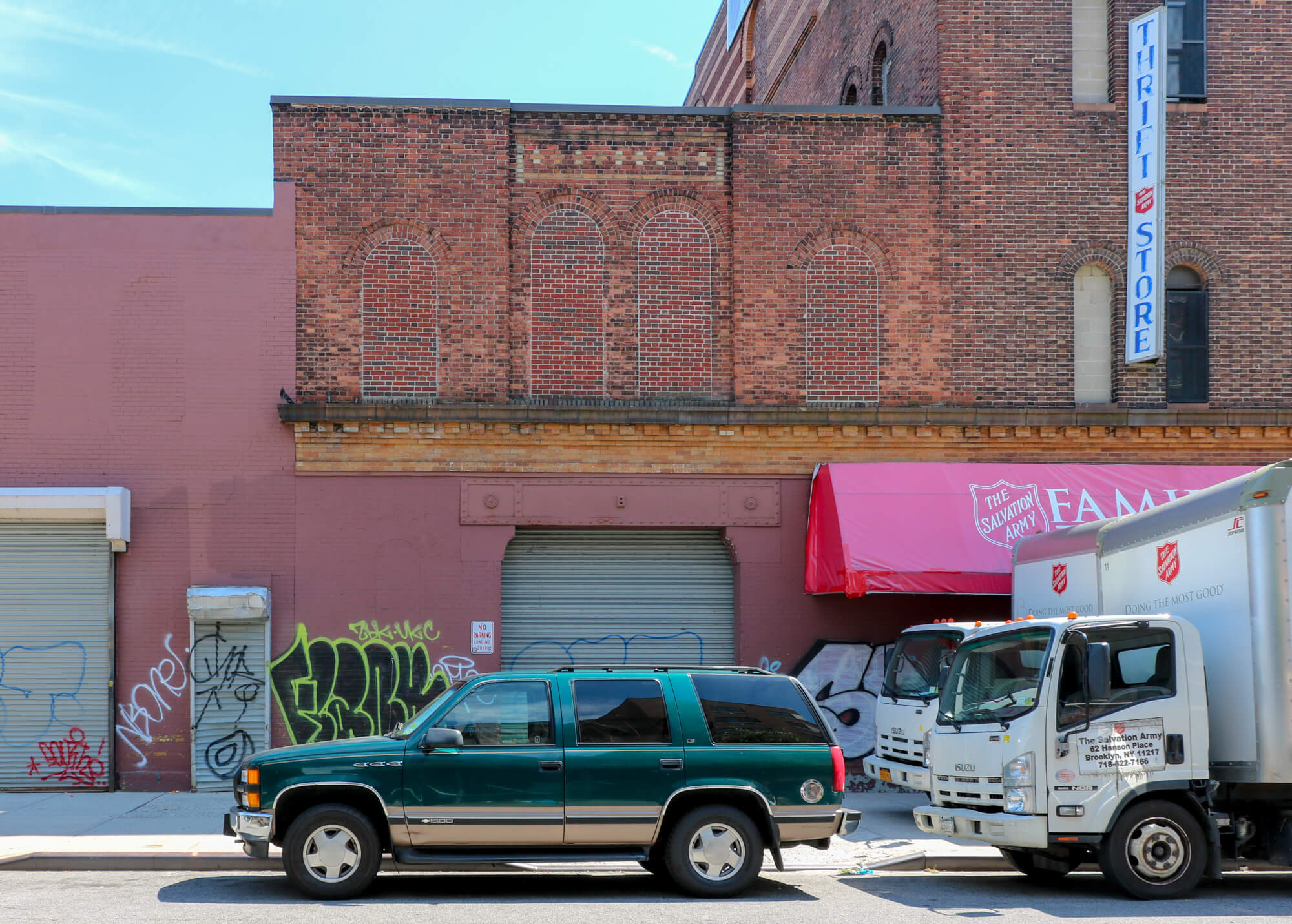Salvation Army Shuts to Make Way for Apartments Replacing Francis Kimball’s Clinton Hill Gem
The building’s beautiful brickwork and Venetian-inspired windows and stripes will likely not survive a plan to transform it into apartments.

The building in 2018. Photo by Susan De Vries
The Salvation Army store at 22 Quincy Street in Clinton Hill has closed, although the warehouse is still accepting donations. The building, although little known, is a “major Brooklyn building,” as a Brownstoner commenter once put it, designed by renowned architect Francis Kimball in 1899 as a distribution center for tony Brooklyn department store Frederick Loeser & Company.
Its beautiful brickwork and Venetian-inspired windows and stripes will likely not survive a plan to transform it into apartments. City documents recorded in September appear to show a well-known developer and Salvation Army intend to turn the property, which already exceeds its buildable floor area, into two tax lots. Then, the plan is to build a new 41-unit apartment building with underground parking on the western lot and alter and convert the remaining structure on the eastern side into 46 apartments, building permit applications filed last year show.

The developer appears to be Slate Property Group (one of its executives, David Schwartz, and its address appear on a variety of public documents concerning the property). When reached by email, Schwartz declined to comment.
A zoning diagram of the new building shows a fairly traditional and symmetrical looking five-story apartment building with multi-paned windows, a terrace, and a number of openings on the ground floor, including a garage door. The architect of record is Jeffrey Kamen, known for his facility with building code. Documents refer variously to this building, located on the corner of Downing and Quincy, as 10, 22 and 26 Quincy Street.
No permits have been issued so far.

In 2018, the Salvation Army said it planned to close the store in September of this year, bringing its total number of stores in the borough to three. (Its Fulton Street store closed in March, and a 2106 plan to open a distribution center at 109 2nd Avenue in Gowanus does not appear to have come to fruition.) As real estate values have risen in Brooklyn, the Salvation Army has been selling off properties in the borough to fund its charitable operations.
Kimball, one of New York City’s foremost 19th century architects, also designed the Emanuel Baptist Church in Clinton Hill, the Montauk Club in Park Slope, the Loeser store in Downtown Brooklyn, and early skyscrapers in Manhattan.

The Loeser warehouse and delivery center is a beautiful and unusual building, with stripes, arches, and other decorative details in brown and orange brick. You have to look up to see it, because the ground floor exterior is covered in paint and metal rolling doors and has taken on a workaday, industrial appearance.
The design combines the arched windows of the American Romanesque Revival factory style with the quatrefoil decorations, double windows and stripes of the Venetian Gothic, a style that appears often in Kimball’s work. The building’s simple yet striking decorative effects anticipate the two-dimensional ornament and brickwork that became ubiquitous in the early 20th century.

The top three floors of the building served as the company’s warehouse. On the bottom floor was a stable for deliveries. Although the original stable doors are gone, the building retains its stable door openings and all its other features. Inside, ramps for vehicles still connect the floors.
The building, which is not landmarked, has been owned and operated as a thrift store by the Salvation Army for decades. At 70,158 square feet, it is over FAR. Classed as a factory, it’s in a medium-height residential district (R6B).

In 2015, we reported 22 Quincy Street was in contract to be sold to an unnamed buyer for about $30 million, according to sources. If any sale or ground lease has taken place, city records do not reveal it.
Tucked away and nearly forgotten, the architecturally significant building sits on one of Brooklyn’s most obscure yet storied streets. This was a sleepy corner for decades. Across the street is what was once the Broken Angel. New developments have popped up next to it and on the site of what was once a Borden Milk Company factory at 15 Quincy, now affordable housing.



[Photos by Susan De Vries unless noted otherwise]
Related Stories
- Apartments Could Be Coming Soon to Francis Kimball’s Nearly Forgotten Clinton Hill Gem
- Building of the Day: 22 Quincy Street
- Salvation Army’s Clinton Hill Building in Contract for About $30 Million
Email tips@brownstoner.com with further comments, questions or tips. Follow Brownstoner on Twitter and Instagram, and like us on Facebook.





What's Your Take? Leave a Comment